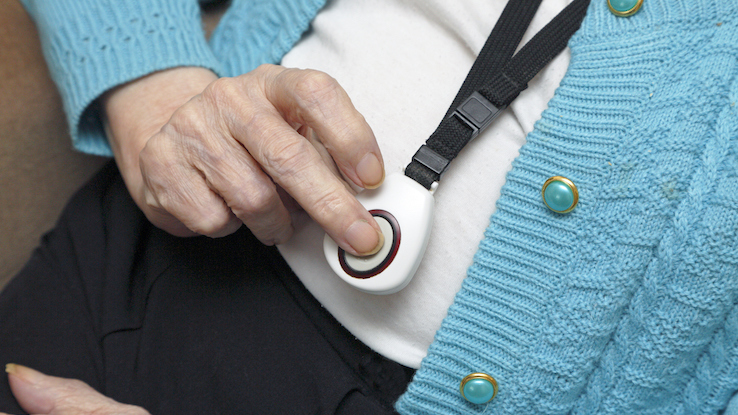How Fall Alert Tech Can Help You Stay Safe

Overall, more than one in four older people experience a fall every year. Additionally, among older adults, approximately one in five falls result in an injury, and there are more than 38,000 unintentional fall-related deaths every year among adults over the age of 65.
Fortunately, it’s possible to make life safer for individuals at risk of falls. Fall alert tech ensures people get the assistance they need during medical emergencies. Here’s a closer look at fall alert tech.
What Is Fall Alert Tech?
Fall alert tech is a type of medical device that uses a variety of sensors to detect when an individual has fallen. These pieces of medical technology typically come as wearable devices, often as necklaces. While smartwatches can also offer similar capabilities, necklace-based fall alert technology is more accurate than versions worn on the wrist, especially when the device is worn high on the chest or near the top of the sternum.
Fall Detection Capabilities
Fall alert tech uses a variety of sensors to detect falls. Accelerometers are the most widely used sensor in this category, as they can detect sudden accelerations that are associated with falls. Some may also include barometers, as those can identify air pressure changes that indicate a fall occurred.
These detection capabilities keep a person safe since the devices are connected to services that automatically alert appropriate emergency medical personnel when the sensors identify movement indicative of a fall. In turn, there’s less delay in receiving medical assistance.
Medical Response Teams
As mentioned above, the fall detection capabilities allow fall alert tech to contact emergency medical providers if the device determines a fall occurred. However, no reputable device claims 100% accuracy.
To compensate for potentially undetected falls, these medical devices also come with an additional feature that enhances safety: a button that summons medical assistance. That allows the wearer to request help even if they can’t get up and reach a phone.
Plus, device users aren’t restricted from using the button for instances other than falls. As a result, fall alert tech can improve a person’s safety in any medical emergency.
Staying Connected
While the focus on fall alert tech is alerting medical professionals after a fall occurs, the devices also allow users to reach out to other emergency contacts with the push of a button. This enhances safety in situations where immediate emergency medical care isn’t necessary but quick support is a necessity.
Additionally, the services can ensure that loved ones are informed if an incident occurs that requires medical intervention. This allows the device wearer to stay connected to essential people in their lives, even if they’re incapacitated by a fall or medical emergency.
Top Systems to Consider
If you’re looking for fall alert tech for yourself or a loved one, there are many options on the market. Ideally, you want to focus on top-performing technologies with excellent reputations when it comes to customer service, both during emergencies and in general.
Some of the top systems to consider include:
- ADT Health
- Bay Alarm Medical
- Lifeline
- LifeFone
- Medical Alert
- Medical Guardian





